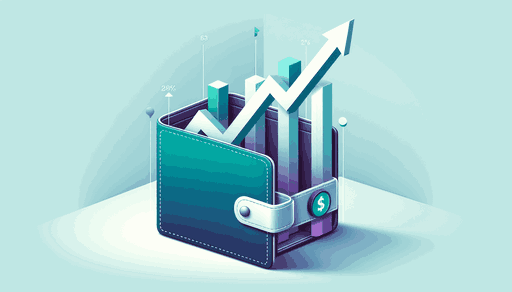Understanding Inflation
Explore how inflation influences your purchasing power and financial planning, and learn strategies to mitigate its effects with ProjectionLab.

Inflation is the rate at which the general level of prices for goods and services rises, subsequently eroding purchasing power. It’s a key economic indicator that affects everyone – from individual consumers and businesses to investors and policymakers.
Understanding Inflation
Inflation is commonly tracked through two primary indexes:
- Consumer Price Index (CPI): Reflects the average change over time in the prices paid by urban consumers for a basket of goods and services. For example, a rise in CPI indicates that your grocery or fuel costs might be increasing.
- Producer Price Index (PPI): Shows the average change over time in the selling prices received by domestic producers. This affects the cost of goods even before they reach the consumer market.
Historically, a moderate inflation rate (typically around 2-3% per year in many economies) is associated with a healthy, growing economy. Yet, high inflation rates can significantly impact living costs and reduce the value of money.
Causes of Inflation
- Demand-Pull Inflation: This occurs when the overall demand for goods and services in an economy outstrips the supply.
- Cost-Push Inflation: Caused by an increase in production costs, like raw materials and wages, which businesses often pass on to consumers.
- Built-In Inflation: Linked to the expectation of future inflation. Workers demand higher wages; businesses then increase prices to maintain profits.
- Monetary and Fiscal Policies: These include central bank actions (like altering interest rates) and government spending or taxation policies.
Inflation and Investments
Different investment vehicles respond to inflation in diverse ways:
- Stocks: Some companies can pass higher costs onto consumers, potentially increasing revenues. The impact varies by sector.
- Bonds: Typically, fixed-income returns may diminish in value during high inflation. Inflation-linked bonds, such as TIPS, aim to mitigate this risk.
- Real Estate: Property values and rents often increase with inflation, making real estate a potential hedge against inflation.
Coping with Inflation in Financial Planning
To navigate inflation, consider:
- Diversifying investments to include assets that historically perform well during inflation.
- Keeping a portion of your portfolio in liquid assets for short-term needs.
- Regularly revisiting and adjusting your financial plan.
- Exploring inflation-protected retirement income options, like certain annuities.
Remember, inflation not only affects how much you pay for goods and services but also the value of your investments and savings. For example, if inflation is at 3% per year, your savings need to grow at least at this rate to maintain their purchasing power. Understanding and planning for inflation is crucial for financial health.
Leverage ProjectionLab in Inflationary Times
ProjectionLab enables you to analyze and adjust your financial plans considering inflation. By inputting different inflation scenarios, you can understand how changing economic conditions might impact your savings, investments, and retirement plans. ProjectionLab helps you make informed decisions to protect and grow your wealth, even in times of inflation. Discover how to safeguard your financial future against inflation at ProjectionLab.